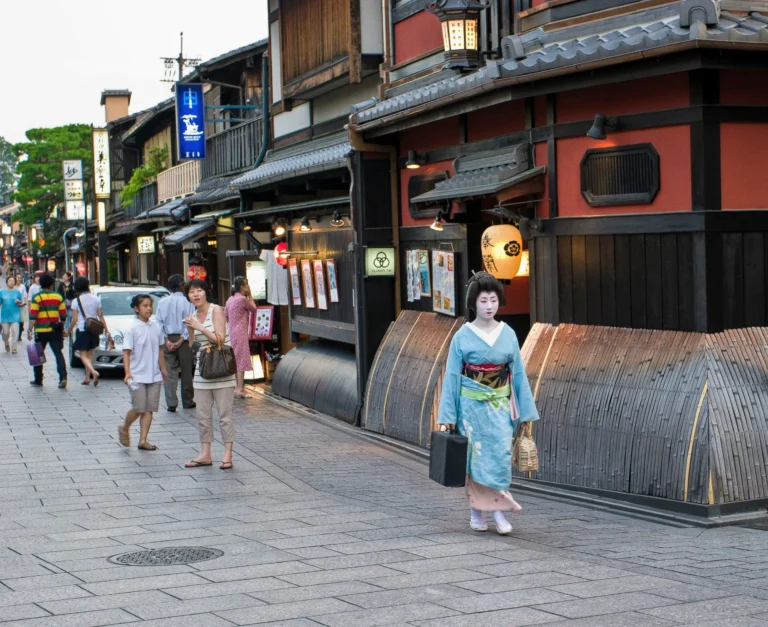Last night we thought that if the weather were clear, we would go to Mount Fuji and extend our stay in Tokyo by one day. But it was not. It was cloudy in Tokyo, and the local weather forecast showed it was raining at Mount Fuji, so there was no point in driving there. We saw the mountains from the airplane when we came to Japan. It is a beautiful mountain, but we would not see it in the rain. So, this part of the plan was canceled that day, and we took the Shinkansen to Kyoto.
As the JR pass is not valid for Nozomi trains, we had to choose between Hikari and Kodama. These are a bit slower. But still, the ride from Tokyo to Kyoto, about 370 km, took 2.5 hours (this part of the railway has many stops). We changed from the Shinkansen to the JR line (for one visit) at Kyoto station. Kyoto Station is a very modern building, opened in 1997. Coming to Kyoto, The futuristic cathedral with striking steel and glass as a first view was surprising, as we expected to see primarily Japanese history and culture.
More precisely, we had to find a hotel, a ryokan, a Japanese-style guesthouse. We booked our ryokan Yuno Yado Shoei in the International Tourism Center of Japan a day before in the Kotsu Kaikan Building in Tokyo (JR Yurakucho Station). People there are very helpful and can help to find accommodation or suggest attractions. Our ryokan cost 11,200 Yen (105 USD) per room per night, and we had a private bath and toilet.
Staying in a ryokan means living in a room with tatami mat flooring, sleeping on a futon put directly on the tatami floor, and wearing a yukata (a robe) after taking an onsen hot spring bath. At first, it seemed strange not to have a chair or bed in the room. In conclusion, we can say that sleeping in the ryokan was very good.
After checking in, we wanted to book the dinner at Shimonso Beer Garden, advertised in Kyoto’s visitor guide newspaper. We asked our receptionist to call there, but it turned out it was fully booked for that evening. So we decided to get the first glimpse of Kyoto by ourselves. We decided to go to the Gion district for a start.
After closing the door of our ryokan, we saw that something was going on on the next street – people with cameras were standing there. It turned out that there was a traditional geisha house called okiya just next door, and there was a ceremony where maiko girls (geisha apprentices) sent geishas to the house.

This is who Geisha is. This is the explanation from Wikipedia- Geishas are entertainers; their purpose is to entertain their customers by reciting verses, playing musical instruments, or engaging in light conversation. Clients understand that geisha engagements may include flirting with men and playful innuendos but nothing more. In a social style that is uniquely Japanese, men are amused by the illusion of that which is never to come. Geishas do not engage in paid sex with clients.
Our first knowledge of geishas is from the book Memoirs of a Geisha. Reading this well-written and fascinating book raised my interest in Japanese culture, and maybe this was one of the reasons we wanted to visit Japan. Because of that, it was fantastic to see such an act during the first minutes of getting to know Kyoto in the evening.
After that, we went to Gion. We walked through the old streets of Gion, enjoying the architecture and atmosphere. We found a house called Gion Corner. Gion Corner is a popular night spot where tourists can experience an overview of seven kinds of Japanese traditional arts and entertainment in a single setting: Kyoto-style Dance, Flower Arrangement, Tea Ceremony, Japanese Harp, Comic Play, Court Music, and Puppet Play. There are two shows every evening at 7 PM and 8 PM, and a 50-minute show costs 3150 yen (cash only). It was expensive, but the performance was outstanding, giving a quick overview. We were delighted and considered it a good substitute for the show we could not attend.
After the show, we were hungry and wanted to find a good sushi place. We asked for advice from several people on the street and had dinner at a very popular (considering we had to wait for 10 minutes for a seat) automated sushi bar. Sushi and other items were rotated on a carousel, and customers could order specific items from a screen at each table. In this case, the order came from a toy shinkansen. This was fun and cheap (dinner for two costs about 3500 yen), but the sushi was not as fresh and delicious as our past experiences.
Related reading:
- Travel to the temple of Himeji, Kyoto
- Hiroshima, the island of Miyajima, Peace Memorial Park
- From Kyoto to Arashiyama. Visiting Kinkakuji Temple
- Nara, the historical capital of Japan; Northern Higashiyama
- Day Three in Tokyo – Senso-Ji Temple and Odaiba
- How to spend three days in Tokyo?
- Day Two in Tokyo – Ginza and Roppongi Hills
- Tips and recommendations for traveling to Japan
- Ohara, a rural glimpse of Japan




